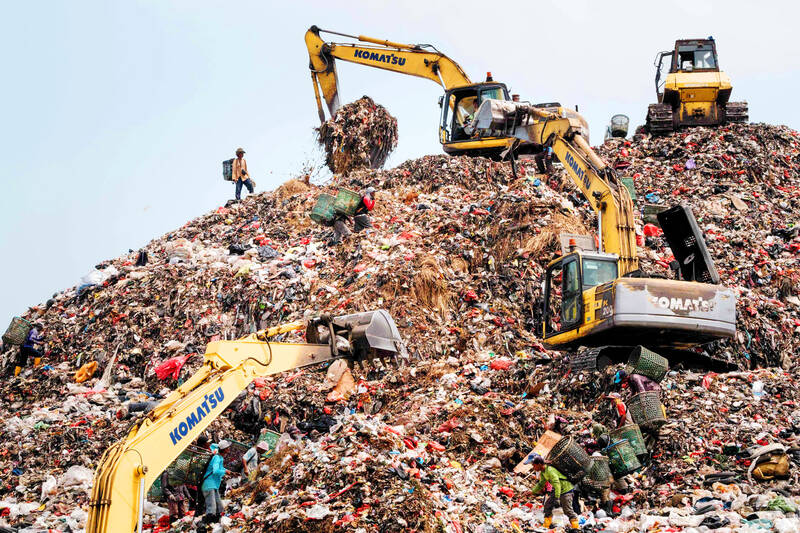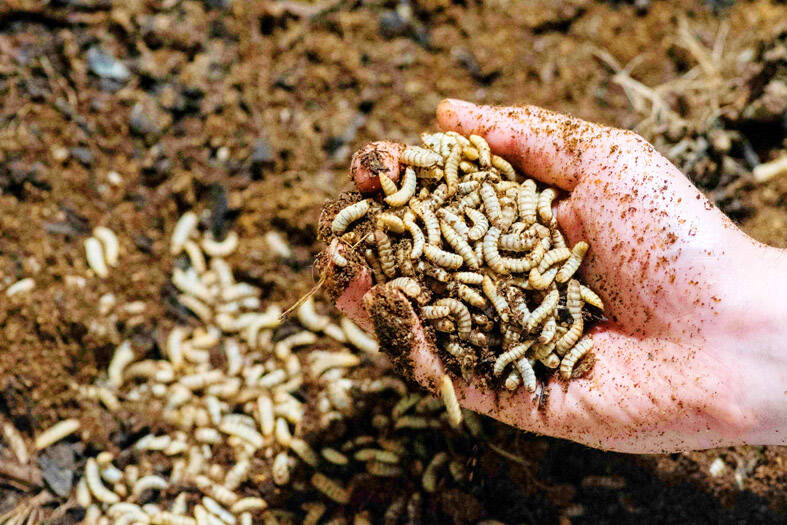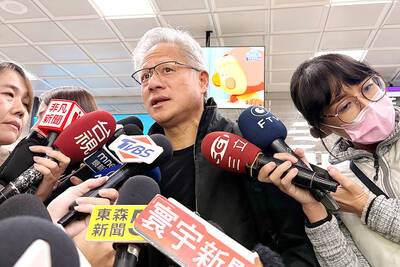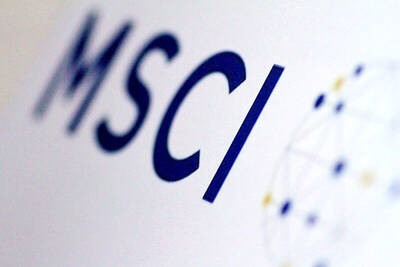Indonesian maggot farmer Rendria Labde spoils his black soldier flies with tasty treats and no wonder: To him, they are warriors fighting an urgent battle against the mounds of food waste threatening to spill over from Jakarta’s landfill.
Most of the rubbish from the city of more than 10 million people, including food waste, ends up in the Bantar Gebang landfill in Bekasi, a nearby satellite city.
Yet Labde had a better idea — feed the discarded food to his black soldier flies and then sell dried maggots to animal and fish feed makers, so he founded Magalarva.

Phtoo: AFP
“Being a city boy, I looked around at what is the biggest problem in the city. I needed to do something about the waste,” said Labde, who launched Magalarva in 2018 and goes by the nickname “fly guy.”
Magalarva collects food waste, which is then sorted at its facility and used as a feed source for black soldier fly larvae. The bioconversion process converts food waste into high-protein body mass of larvae and organic fertilizers.
Today, the company takes in 5 to 6 tonnes of food waste per day and produces about 250kg of dried larva.

Photo: AFP
It all started in 2016 when Labde decided to find out more about his own trash trail by following it to Bantar Gebang, a “monumental” moment that left him awed by the landfill’s size and how badly maintained it was.
As Jakarta’s wealth and population have soared in the past few years, vital infrastructure such as rubbish collection and recycling services have struggled to keep pace.
Many Indonesian cities rely on informal scavengers to keep streets clean, with valuable trash separated and sometimes recycled, while the rest is often burned by roadsides or thrown into waterways where it can cause flooding or wash downstream to blight coastal areas of the archipelago.
Most of the rest of the rubbish ends up at landfill sites, which globally account for about 11 percent of methane emissions. This is expected to rise about 70 percent by 2050 as the world’s population continues to climb, the World Bank has said.
“Poorly designed landfills can contaminate groundwater and emit GHGs [greenhouse gases] into the atmosphere,” said Nick Jeffries, a senior expert at the Ellen MacArthur Foundation, a nonprofit that works toward creating a global circular economy.
Landfill fires also affect human health, he added.
These dangers were all too apparent to Labde when he visited Bantar Gebang, where piles of garbage rise 50m into the air, and which officials say could reach maximum capacity within two years.
“All countries around the world are doing landfill as well, but why are we the worst?” the 32-year-old asked as he sat in his fly farm’s office, which was cluttered with bags of dried maggots.
Opened in 1989, the Bantar Gebang dump used by Jakarta covers more than 81 hectares and is the capital’s only landfill and Southeast Asia’s largest.
About 100 bulldozers and 800 people work on the massive site where 90 percent of the city’s waste ends up.
About 6,000 informal workers also roam the soaring mountains of trash, searching for anything that has value to take to recycling sites outside.
During the dry season fires regularly break out, while rain during the monsoon can cause mounds of trash to collapse and spill outside the landfill’s boundaries.
Last year, Bantar Gebang took in 7,500 tonnes of waste per day, up from 6,400 tonnes in 2015, said a landfill official, who asked not to be named because they are not authorized to speak to the media.
Organic material, such as food and garden waste, accounted for 50 percent, plastics made up 23 percent and paper 17 percent, he said.
“In two years, if the condition is the same, we will reach our maximum capacity,” he said, adding that there is “no plan” in place if that happened.
There are about 2,000 recycling facilities in Jakarta and households are encouraged to separate their waste and use recycling collection points.
However, home collection services are few and businesses are responsible for managing their own waste, with some waste management firms illegally dumping trash.
A government ban on single-use plastic bags in malls, and street and wet markets in Jakarta is also poorly enforced.
Mohamad Bijaksana Junerosano is the founder and CEO of Waste4Change, which collects waste for a fee and takes it to four small recycling sites across the country, including one near Bantar Gebang.
Junerosano, who has about 15 years’ experience in the industry, said that Jakarta’s waste issues were caused by lax enforcement of laws, a lack of public-private partnerships and a dearth of fair and proper financing arrangements for responsible waste management.
People in Jakarta have an “out of sight, out of mind” mindset on trash, and with little enforcement, there are “no rules to the game,” said Junerosano.
“The minimum for us to be feasible, it’s like two cups coffee, 60,000 rupiah [US$3.86] per month per household, but the willingness to pay is only 20,000 to 30,000 rupiah,” he said, referring to how much it costs his company to collect a family’s trash.
In 2018, Indonesia generated 65.79 million tonnes of waste, 44 percent of which was food waste, said Mushtaq Memon, coordinator of chemicals and pollution action for Asia-Pacific at the UN Environment Programme.
Of that, 72 percent was managed and 28 percent unmanaged, with 69 percent of the managed waste ending up in landfills and just 12 percent recycled, he said.
“With over half of Indonesia’s population residing in urban environments, waste management in cities is a critical issue for governments, industries and citizens,” Memon said.
Policies to encourage people to separate and sort their waste should be prioritized, food loss and waste should be reduced and scavengers should be trained and supported, he added.
“By providing training to waste pickers to identify and sort waste materials from each other, it is both possible to increase recycling rates and the quality of recyclable materials, as well as improve the incomes of waste pickers,” he said.
Labde has faced his own challenges in trying to become part of the solution. Magalarva has had to move premises three times already — twice because of complaints about the smell.
However, the company has been at its current site for three years now, receiving food waste from a major milk producer, waste collection businesses, waste collection sites used by scavengers, a large wet market and 200 households.
Orders coming in for their high-protein animal feed ingredient are six to eight times current capacity, said Labde, adding that he hopes to expand when he has the capital to do so.
“I love flies. What they’re doing with processing all the waste... I’ll always be grateful for them... It’s the circle of life,” he said.

PERSISTENT RUMORS: Nvidia’s CEO said the firm is not in talks to sell AI chips to China, but he would welcome a change in US policy barring the activity Nvidia Corp CEO Jensen Huang (黃仁勳) said his company is not in discussions to sell its Blackwell artificial intelligence (AI) chips to Chinese firms, waving off speculation it is trying to engineer a return to the world’s largest semiconductor market. Huang, who arrived in Taiwan yesterday ahead of meetings with longtime partner Taiwan Semiconductor Manufacturing Co (TSMC, 台積電), took the opportunity to clarify recent comments about the US-China AI race. The Nvidia head caused a stir in an interview this week with the Financial Times, in which he was quoted as saying “China will win” the AI race. Huang yesterday said

Nissan Motor Co has agreed to sell its global headquarters in Yokohama for ¥97 billion (US$630 million) to a group sponsored by Taiwanese autoparts maker Minth Group (敏實集團), as the struggling automaker seeks to shore up its financial position. The acquisition is led by a special purchase company managed by KJR Management Ltd, a Japanese real-estate unit of private equity giant KKR & Co, people familiar with the matter said. KJR said it would act as asset manager together with Mizuho Real Estate Management Co. Nissan is undergoing a broad cost-cutting campaign by eliminating jobs and shuttering plants as it grapples

The Chinese government has issued guidance requiring new data center projects that have received any state funds to only use domestically made artificial intelligence (AI) chips, two sources familiar with the matter told Reuters. In recent weeks, Chinese regulatory authorities have ordered such data centers that are less than 30 percent complete to remove all installed foreign chips, or cancel plans to purchase them, while projects in a more advanced stage would be decided on a case-by-case basis, the sources said. The move could represent one of China’s most aggressive steps yet to eliminate foreign technology from its critical infrastructure amid a

MORE WEIGHT: The national weighting was raised in one index while holding steady in two others, while several companies rose or fell in prominence MSCI Inc, a global index provider, has raised Taiwan’s weighting in one of its major indices and left the country’s weighting unchanged in two other indices after a regular index review. In a statement released on Thursday, MSCI said it has upgraded Taiwan’s weighting in the MSCI All-Country World Index by 0.02 percentage points to 2.25 percent, while maintaining the weighting in the MSCI Emerging Markets Index, the most closely watched by foreign institutional investors, at 20.46 percent. Additionally, the index provider has left Taiwan’s weighting in the MSCI All-Country Asia ex-Japan Index unchanged at 23.15 percent. The latest index adjustments are to